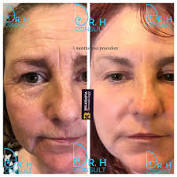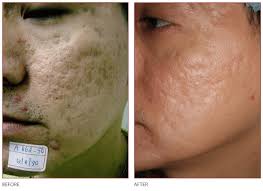Sexually Disabled
6ft3 chad
- Joined
- Apr 9, 2022
- Posts
- 8,847
- Reputation
- 9,844
CO2 Laser Resurfacing can be used to treat a variety of skin conditions, such as acne scarring, age spots, pigmentation, and fine lines and wrinkles, as well as to improve the skin's overall condition. It can also create lift and restore some elasticity.
The treatment can take anywhere from 30 minutes to an hour, depending on the size of the area being treated. For added comfort, a topical anesthetic cream will be applied 30 minutes before the procedure.
It can take up to four weeks to recover completely, with two weeks spent recovering and two weeks spent repairing. During your treatment sessions, it is very important to wear an SPF every day, and you should continue to do so every day after that.
Treatment for acne scarring, wrinkle removal, and skin resurfacing typically requires 3-5 sessions, while scar removal typically requires 4-6 sessions.
It can take up to six weeks for results to show up.
Your dermatologist may recommend ablative or non-ablative lasers based on your specific requirements. Erbium or carbon dioxide (CO2) are examples of relative lasers. Scars, warts, and deep wrinkles are all treated with CO2 laser resurfacing treatments. Erbium is used to treat superficial skin issues as well as fine lines and wrinkles. The skin's outermost layers are removed by either type of ablative laser.
On the other hand, non-ablative lasers do not remove any skin layers. Fractional lasers, pulsed-dye lasers, and pulsed light lasers are examples of these. Rosacea, spider veins, and acne-related skin issues can all be treated with non-ablative lasers.
The following skin problems can be treated with laser skin resurfacing:
Laser skin resurfacing does come with the possibility of side effects, just like other cosmetic procedures.
These include:
Accutane and other acne medications may make scarring more likely. All of your medications, including over-the-counter (OTC) ones, should be discussed with your dermatologist.
The treated area will need to be cleaned twice to five times per day. You will use a saline or vinegar-based solution instead of your usual cleanser as directed by your doctor.
Additionally, you will need to use new dressings to keep your skin clean.
A daily moisturizer can also aid in healing, but you should consult your doctor first.
Before and afters:



The treatment can take anywhere from 30 minutes to an hour, depending on the size of the area being treated. For added comfort, a topical anesthetic cream will be applied 30 minutes before the procedure.
It can take up to four weeks to recover completely, with two weeks spent recovering and two weeks spent repairing. During your treatment sessions, it is very important to wear an SPF every day, and you should continue to do so every day after that.
Treatment for acne scarring, wrinkle removal, and skin resurfacing typically requires 3-5 sessions, while scar removal typically requires 4-6 sessions.
It can take up to six weeks for results to show up.
Your dermatologist may recommend ablative or non-ablative lasers based on your specific requirements. Erbium or carbon dioxide (CO2) are examples of relative lasers. Scars, warts, and deep wrinkles are all treated with CO2 laser resurfacing treatments. Erbium is used to treat superficial skin issues as well as fine lines and wrinkles. The skin's outermost layers are removed by either type of ablative laser.
On the other hand, non-ablative lasers do not remove any skin layers. Fractional lasers, pulsed-dye lasers, and pulsed light lasers are examples of these. Rosacea, spider veins, and acne-related skin issues can all be treated with non-ablative lasers.
The following skin problems can be treated with laser skin resurfacing:
- Age spots
- acne scars
- fine lines and wrinkles
- crow's feet
- sagging skin
- uneven skin tone
- enlarged oil glands
- warts
Laser skin resurfacing does come with the possibility of side effects, just like other cosmetic procedures.
These include:
- burning
- bumps
- rash
- swelling
- infection
- hyperpigmentation
- scars
- redness
Accutane and other acne medications may make scarring more likely. All of your medications, including over-the-counter (OTC) ones, should be discussed with your dermatologist.
The treated area will need to be cleaned twice to five times per day. You will use a saline or vinegar-based solution instead of your usual cleanser as directed by your doctor.
Additionally, you will need to use new dressings to keep your skin clean.
A daily moisturizer can also aid in healing, but you should consult your doctor first.
Before and afters:

